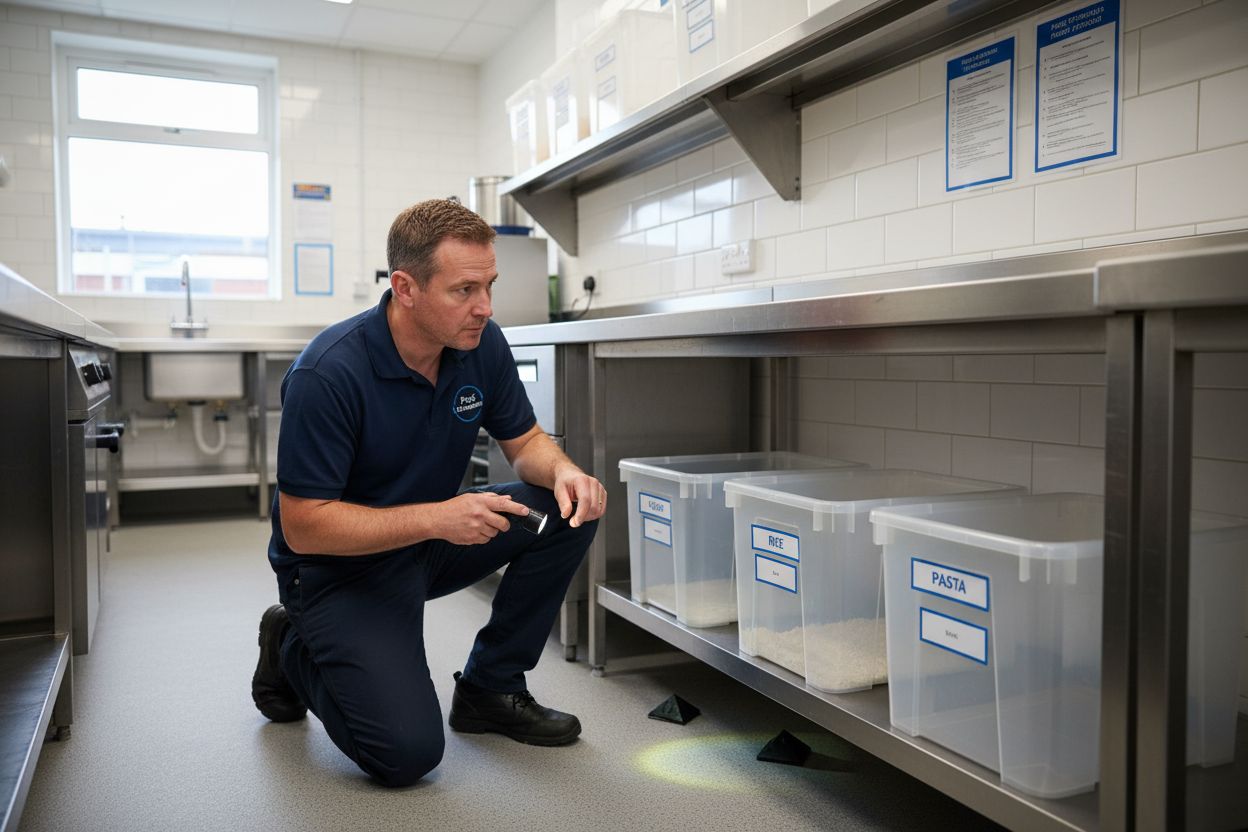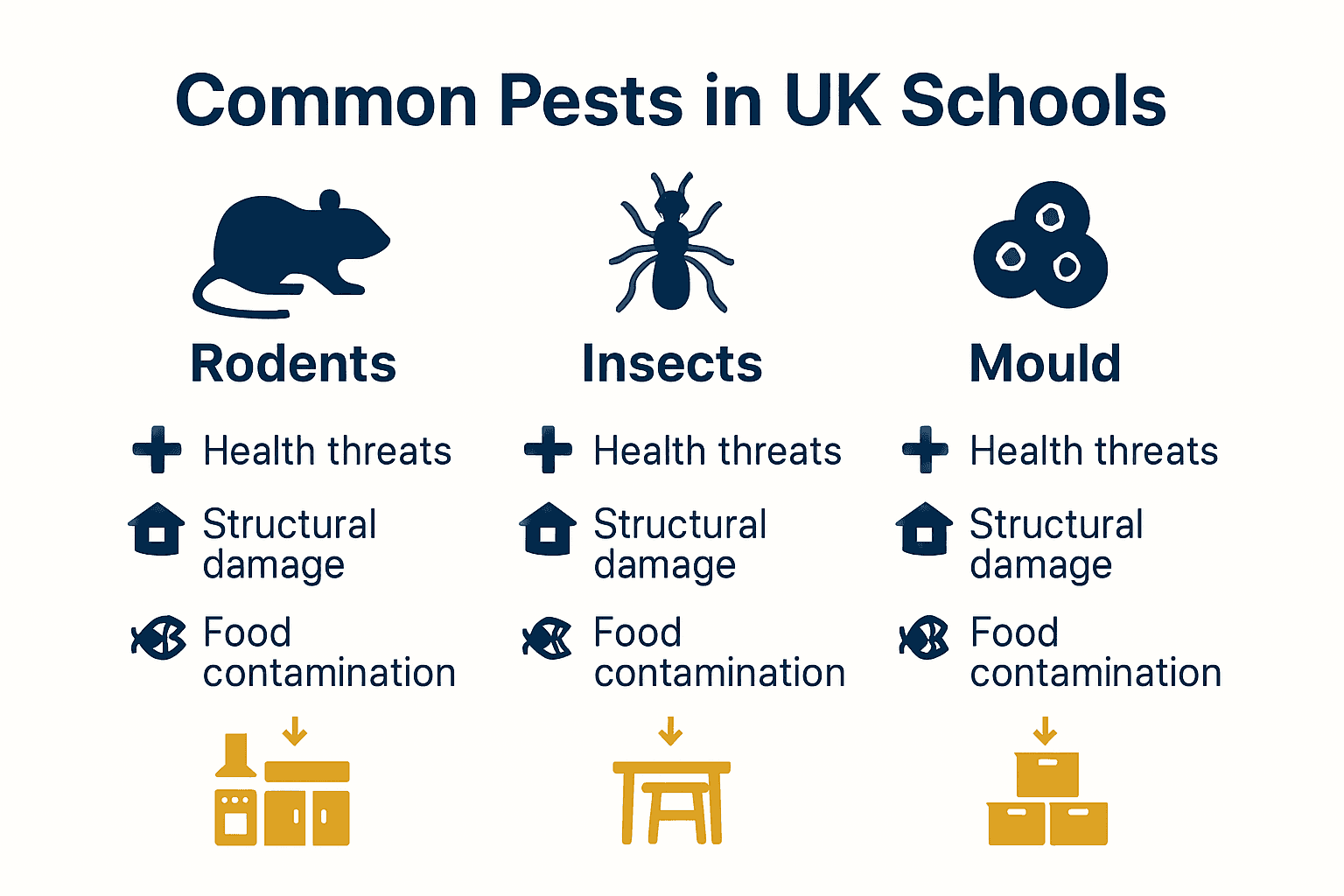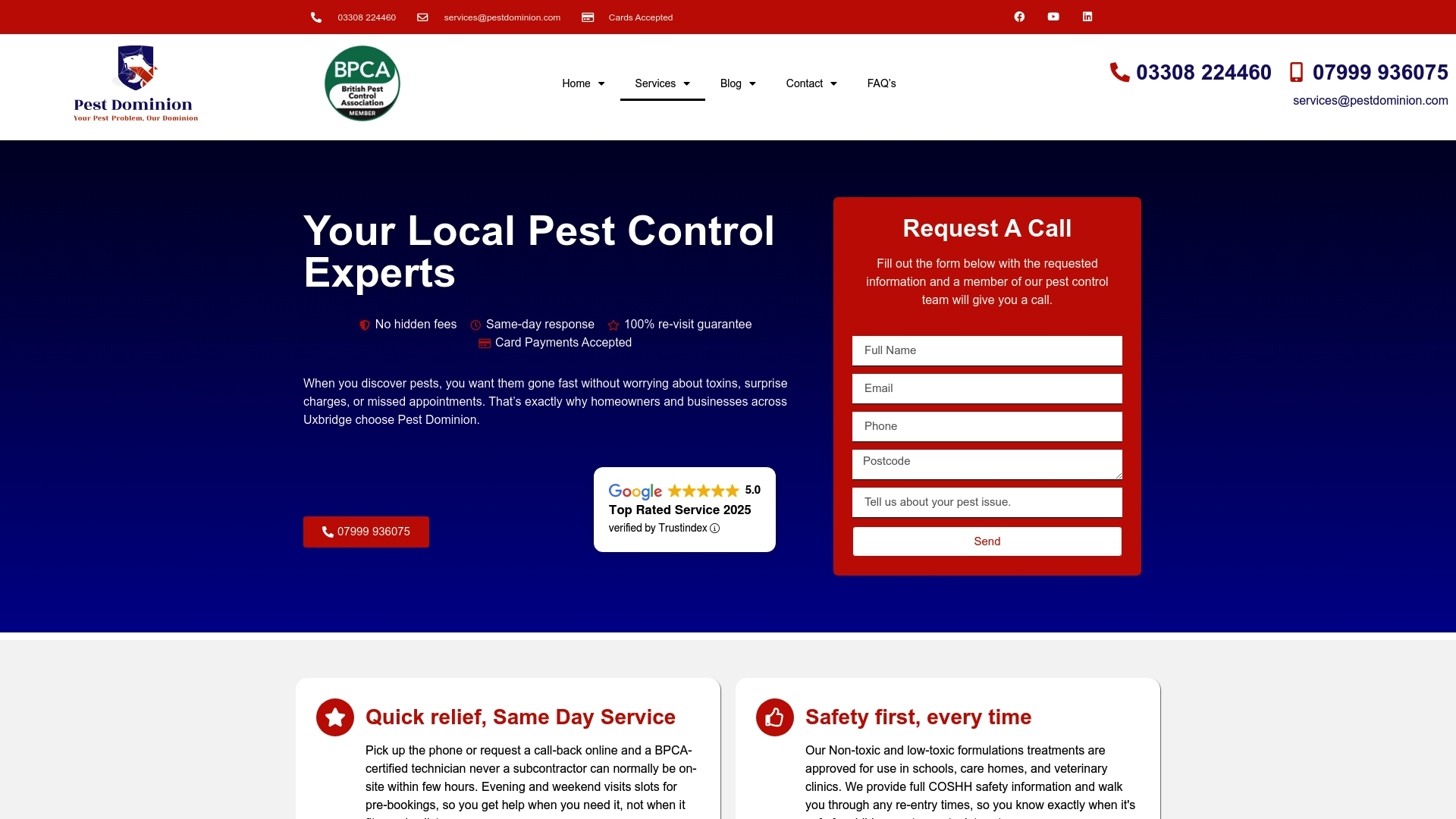More than 40 percent of UK teachers have noticed pest issues at their schools, highlighting a widespread concern that affects health, safety, and daily learning. Pest problems in educational settings do more than cause discomfort—they can harm children’s health, interrupt classroom routines, and bring schools into legal trouble. Knowing which pests threaten schools and how to address them helps protect students, staff, and the overall quality of education.
Table of Contents
- Pest Control In Schools Explained
- Health Risks And Safety Concerns
- Common Pests In Educational Settings
- Uk Regulations And Compliance Requirements
- Long-Term Prevention And Best Practices
Key Takeaways
| Point | Details |
|---|---|
| Legal Obligation | Schools must comply with pest management regulations to ensure the safety of students and staff, as outlined in UK law. |
| Health Risks | Pest infestations can significantly affect respiratory health and overall well-being in educational environments. |
| Proactive Prevention | Implementing consistent inspections and hygiene practices is essential for long-term pest control effectiveness. |
| Comprehensive Strategies | A multi-layered approach, including professional assessments and maintenance, is critical for sustainable pest management in schools. |
Pest Control in Schools Explained
Pest control in schools is not just a cleanliness issue—it’s a critical health and safety requirement under UK law. According to GOV.UK guidance, educational institutions have a legal obligation to manage potential pest risks and ensure the safety of pupils, staff, and visitors. School administrators must proactively identify pest hazards, conduct systematic risk assessments, and implement effective mitigation strategies.
The legal framework for pest management in schools is robust. The Health and Safety at Work etc. Act 1974 and the Occupiers’ Liability Act mandate that school premises remain free from health risks. This means schools must:
- Regularly inspect facilities for signs of pest infestations
- Develop comprehensive pest management protocols
- Engage professional pest control services for thorough assessments
- Maintain detailed records of pest control activities
Moreover, the Prevention of Damage by Pests Act 1949 grants local authorities specific powers to compel schools to address pest control issues. This legislation underscores the serious nature of managing pest populations, recognising that unchecked infestations can pose significant health risks to vulnerable populations like children. Understanding why pest control matters can help school leadership develop more effective strategies for maintaining a safe learning environment.
Ultimately, effective pest control in schools requires a proactive, systematic approach that combines legal compliance, regular monitoring, and professional intervention. By prioritising pest management, schools can protect student health, maintain hygienic learning spaces, and fulfil their fundamental duty of care.
Health Risks and Safety Concerns
Pests in schools represent a significant public health challenge that extends far beyond mere nuisance. According to a 2024 survey of teachers in England and Wales, approximately 40% reported vermin or pest signs within educational facilities, revealing a widespread issue with potential serious health implications for students and staff alike.
Respiratory health emerges as a primary concern. The same survey highlighted strong connections between pest-related environments and respiratory conditions such as asthma. Pests like rodents, cockroaches, and other insects can trigger allergic reactions, spread infectious diseases, and contaminate food preparation areas. Their presence introduces multiple health risks:

- Potential transmission of bacterial and viral infections
- Increased risk of allergic reactions and respiratory complications
- Contamination of food preparation and storage spaces
- Psychological stress and reduced learning environment quality
According to GOV.UK estate management guidance, poor maintenance creates broader health hazards beyond direct pest interactions. Pests often indicate underlying building infrastructure problems like damp, poor ventilation, and compromised structural integrity. These environmental conditions can exacerbate health risks, particularly for children with pre-existing respiratory conditions. What is pest control becomes crucial in understanding how comprehensive management prevents these systemic health challenges.
Effective pest control in schools is not just about elimination but prevention. Regular professional assessments, robust hygiene protocols, and proactive maintenance can significantly mitigate health risks, creating safer, healthier learning environments for both students and educational staff.
Common Pests in Educational Settings
UK schools face a diverse range of pest challenges that can significantly impact learning environments and student health. According to a 2024 National Education Union survey, vermin infestations are alarmingly prevalent, with approximately 40% of teachers reporting pest-related issues across educational institutions.
Rodent populations represent the most common and concerning pest problem in schools. These include:
- Mice, which can rapidly reproduce and contaminate food areas
- Rats, known for causing structural damage and spreading diseases
- Squirrels, which can enter through small openings and damage electrical systems
Insect infestations present another critical challenge. A notable 2025 case from a Scottish high school highlighted the potential for severe insect problems, specifically documenting a distressing fruit fly infestation linked to poor waste management in school toilets. Other common insect pests include:
- Cockroaches, which can trigger allergic reactions
- Fruit flies and drain flies associated with poor hygiene
- Ants seeking food in cafeterias and kitchen areas
Mould and associated pest environments also pose significant risks. While not traditional ‘pests’, these conditions create habitats for multiple problematic organisms. Cockroach control guide can provide deeper insights into managing one of the most resilient school pest challenges.
Preventative measures—including regular inspections, proper waste management, and maintaining clean food preparation areas—are crucial in mitigating these pest risks and protecting educational environments.

Here’s a comparison of the most common pests found in UK schools and their associated risks:
| Pest Type | Typical Locations | Main Risks |
|---|---|---|
| Mice | Kitchens Storerooms | Food contamination Allergies |
| Rats | Basements Cupboards | Disease transmission Structural damage |
| Squirrels | Roof spaces Lofts | Electrical damage Nesting |
| Cockroaches | Toilets Food areas | Allergic reactions Food contamination |
| Fruit Flies | Waste bins Toilets | Spread of germs Nuisance |
| Drain Flies | Drains Sinks | Hygiene issues Indicator of damp |
| Ants | Kitchens Canteens | Food spoilage Nesting |
| Mould-Related | Damp corners Walls | Asthma triggers Pest attraction |
UK Regulations and Compliance Requirements
Pest control in UK schools is governed by a comprehensive legal framework designed to protect public health and ensure safe learning environments. The Prevention of Damage by Pests Act 1949 forms the cornerstone of these regulations, mandating local authorities to take decisive action against pest infestations, with specific enforcement powers applicable to educational institutions.
Key regulatory requirements for schools include:
- Mandatory risk assessments of pest-related hazards
- Implementation of preventative pest management strategies
- Regular monitoring and documentation of pest control activities
- Compliance with health and safety statutory obligations
Under the Health and Safety at Work etc. Act 1974, schools have a legal duty to assess and manage risks comprehensively. This includes proactively addressing potential pest-related health hazards that could compromise student and staff safety. Educational institutions must develop and maintain robust pest control protocols that:
- Identify potential pest entry points
- Establish clear pest prevention procedures
- Engage professional pest control services when necessary
- Maintain detailed incident and mitigation records
Non-compliance can result in significant legal and financial consequences. Pest risk assessment policy provides crucial guidance for schools navigating these complex regulatory requirements. Ultimately, these regulations aim to create safe, hygienic learning environments that protect the health and well-being of students and educational staff.
Long-Term Prevention and Best Practices
Establishing effective long-term pest prevention in schools requires a comprehensive and systematic approach. According to GOV.UK estate management guidance, educational institutions must develop robust risk assessment and maintenance regimes that go beyond reactive solutions, focusing instead on sustainable prevention strategies.
Strategic prevention involves multiple integrated approaches:
- Regular comprehensive building inspections
- Identifying and sealing potential pest entry points
- Maintaining strict hygiene standards in food preparation areas
- Implementing proper waste management protocols
- Training staff on early pest detection techniques
- Creating a consistent monitoring schedule
The Prevention of Damage by Pests Act 1949 emphasizes continuous pest prevention actions, underscoring the importance of proactive management rather than sporadic interventions. Schools should develop a multi-layered prevention strategy that includes:
- Structural maintenance to eliminate potential pest habitats
- Regular professional pest control assessments
- Immediate response protocols for potential infestations
- Documentation and tracking of all pest-related activities
Pest prevention products can supplement these strategies, providing additional layers of protection. Ultimately, successful long-term pest prevention requires a holistic approach that combines professional expertise, consistent monitoring, and a commitment to maintaining a clean, safe educational environment.
Protect Your School with Expert Pest Control Solutions
Schools face serious challenges with pests that threaten student health and safety as highlighted in the “Why Pest Control in Schools: Complete Guide UK” article. From rodents to insects, these unwanted guests can disrupt learning environments and cause stress among staff and pupils. Schools must act swiftly to comply with legal obligations and maintain hygienic spaces that support wellbeing.

Choose Pest Dominion Limited, your local specialists in Slough and surrounding areas, for fast and reliable pest control services tailored to educational settings. Our accredited team uses safe and humane methods to tackle issues like rodent infestations and insect problems that schools commonly face. Discover comprehensive insights on What is pest control and understand how our approach aligns with the strict Pest risk assessment policy schools require. Act now to secure a pest-free environment that fully supports compliance and the health of everyone on your premises.
Visit Pest Dominion today to book an inspection and take the first step toward safeguarding your school.
Frequently Asked Questions
What are the legal requirements for pest control in schools?
Schools must comply with the Health and Safety at Work etc. Act 1974 and the Prevention of Damage by Pests Act 1949, which mandate risk assessments, preventative pest management strategies, and regular monitoring of pest control activities to ensure a safe environment for students and staff.
What are the common health risks associated with pests in schools?
Pests such as rodents and insects can lead to respiratory issues, allergic reactions, food contamination, and the transmission of infectious diseases. These health risks are especially concerning for vulnerable populations like children.
How can schools prevent pest infestations effectively?
Schools can implement long-term prevention strategies by conducting regular inspections, sealing potential entry points, maintaining hygiene standards, managing waste properly, and training staff on early pest detection techniques. It’s also important to have a solid monitoring schedule.
What types of pests are most commonly found in educational institutions?
Common pests in schools include rodents like mice and rats, insects such as cockroaches and fruit flies, and issues related to mould. Each type poses distinct health risks and requires tailored management strategies.
Recommended
- Pest Dominion: Pesticides for Pest Control in Slough
- 7 Best Pest Prevention Products for Your Property – Pest Dominion, Your Local Pest Control Services
- Pest Control Explained: Protecting Health and Property – Pest Dominion, Your Local Pest Control Services
- Pest Dominion: Pest Control Solutions for Slough & Nearby

